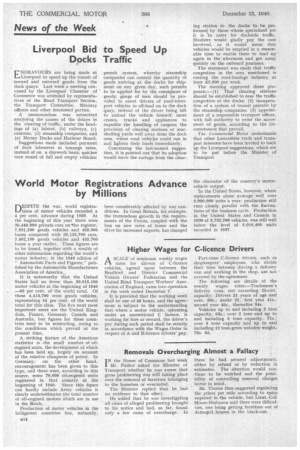World Motor Registrations Advance by Millions
Page 20

If you've noticed an error in this article please click here to report it so we can fix it.
DESPITE the war, world registrations of motor vehicles recorded a 4 per cent, advance during 1939. At the beginning of this year there were 36,440,000 private cars on'the register, 7,951,200 goods vehicles and 45.9,000 buses compared with 35,133,700 cars, 7,602,100 goods vehicles and 455,700 buses a year earlier. These figures are to be found, together with a wealth of other information regarding the world's motor industry, in the 1940 edition of " Automobile Facts and Figures," pubfished' by the Automobile Manufacturers Association of America.
It is -noteworthy that the United States had no fewer than 30,615,100 motor vehicles at the beginning of 1940 • —68 per cent, of the world total. Of these 4,413,700 were goods vehicles, representing 54 per' cent, of the world total for this class. The five next most important users are the United Kingdom, France, Germany, Canada and Australia, but figures for these countries tend to be misleading, owing to the conditions which prevail at the present time.
A striking feature of the American statistics is .the small number of oilengined Units, the development of which has been held up, largely on account of the relative cheapness of petrol. In Germany, on the other hand, encouragement has been given to this type, and there were, according to this source, some 70,000 oitsengined units registered in that country at the beginning of 1940. Since this figure can hardly include Army vehicles it clearly underestimates the total number of oil-engined motors which are in use in the Reich.
Production of motor vehicles in the belligerent countries has, naturally, been considerably affected by war conditions, In Great Britain, for example. the tremendous growth in the requirements of the Forces, coupled with the ban on new sales at home and the drive for increased exports, has changed the character of the country's motorvehicle output.
In the United States, however, where replacements alone average well over 2,000,000 units a year, production still runs closely, parallel with the fluctuations of the business cycle. Production in the United States and Canada in 1939 at 3,732,700 vehicles, was still well below the level of 5,016,400 units recorded in 1937.




























































